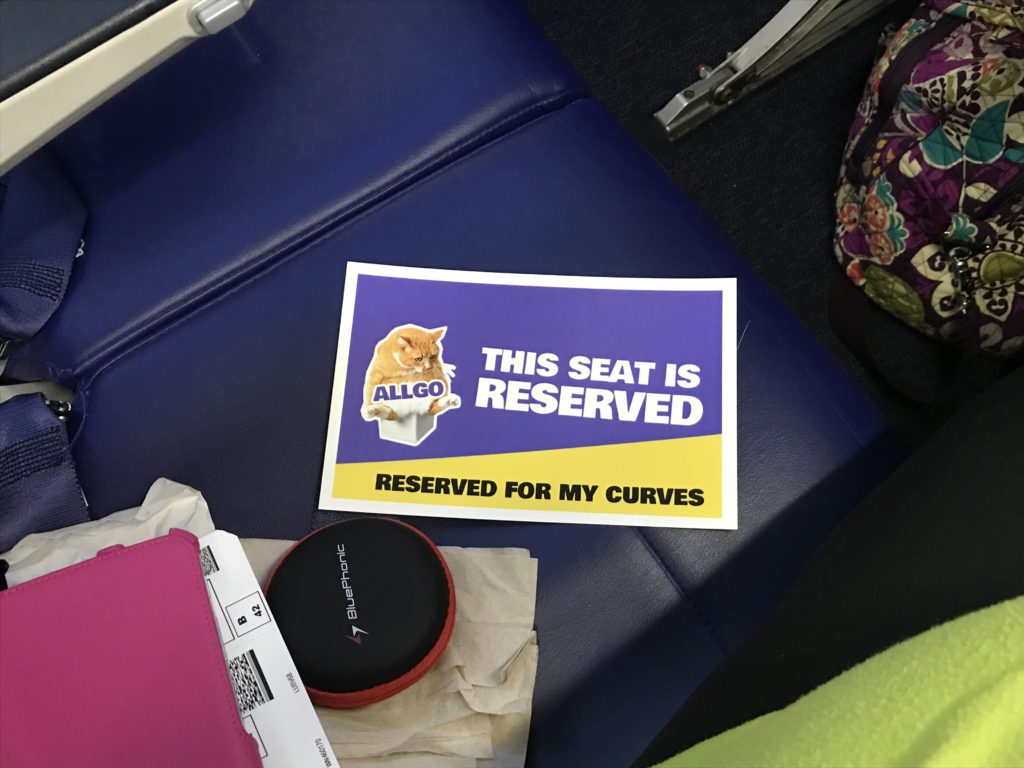
I have always promised myself not to let my weight stop me from doing what I want in life. That includes traveling! While road trips can be adventurous, more often than not I take to the friendly skies to reach my destination.
For years, there have been a lot of stories in the news about negative flying experiences. However, considering the number of flights occurring every day, those incidences make up a very small percentage. I assure you that I have more positive interactions with airline crew and fellow passengers than I have negative.
I don’t want anyone to have a fear of flying — especially during the holiday season — so here are some tips to help you avoid any unexpected turbulence.
Booking a Flight
- Book early for best options and price. The recommended time to book a flight for the best rate is six to eight weeks in advance. However, for the best flight schedules and available seats, check flights as soon as you know your travel dates.
- Book directly with your airline. In case of any travel issues or delays, you will be able to deal directly with the airline and not a third party.
- Check the Customer of Size Policies for your airline. Each airline has their own policy, referred to as either “Passenger of Size” or “Customer of Size.” Most airlines encourage, if needed, the purchase of an additional seat. Southwest provides one at no charge.
- Consider your individual needs. If you prefer two shorter flights instead of one longer flight, you might book a flight with a layover. Pay close attention to layover time and consider if you will have enough time to change gates, get a drink and use the restroom.
- Check first class rates. In a few instances, I found a first class ticket to cost less than two coach tickets. Once, I found a first class seat at less than $100 more than coach fare. When I factored in the free checked baggage, costs were almost equal.
Selecting a Seat
- Seat sizes vary by aircraft. You can check Seat Guru for measurements.
- See how many open seats are available by clicking “view seats.” Be aware of premium seats that have extra leg room and other perks for additional costs.
- Select a window or aisle (your preference) with an empty seat next to it and hope that seat remains empty.
- Download the airline’s app on your phone and periodically check seat assignments. Change your seat if a better option becomes available. Use the app to check-in for your flight as soon as possible (usually 24 hours in advance).
- Bulk head (first row) and Exit row seats have extra leg room. However, these seats typically have solid non-movable armrests which contain the tray table.
- Southwest Airlines has open seating — not preassigned seats.
At the Gate
- Ask to pre-board so you have time to reach your seat without having to walk past other passengers. Southwest allows passengers with extra seats to pre-board.
- Do a final check of seat assignments. If you find you are in a middle seat and would like to move to an aisle or window, politely request a seat change.
Seat Belt Extender
- As with seat sizes, seat belt lengths vary by aircraft type.
- Ask for an extender when you board. A flight attendant will usually get one out of the front cabinet for you. If you find that you don’t need it, you can hand it back during the flight.
- Most airlines don’t allow extenders to be used in exit row seats due to potential tripping hazards.
- Return the extender as you exit the plane, or leave it in the seat. This will ensure availability for other passengers traveling on later flights.
Mobility Assistance
- You can indicate any mobility or disability needs when you make your reservation.
- Wheelchair assistance is available from the curb and check-in areas. An attendant will push you through security and to your gate.
- Some airports have electric carts to take you to a designated drop-off area near your gate.
- Attendants and cart drivers appreciate tips.
 About the Author:
About the Author:
Sarah Bramblette, MSHL, is a member of the OAC National Board of Directors. She also serves as Co-chair of OAC’s Access to Care Committee. Mrs. Bramblette is an avid traveler and obesity patient advocate who joined the OAC as a member in 2005. She has dedicated herself to raising awareness of the OAC, weight bias and the disease of obesity.
Submit Your Own Ideas:
Do you have your own healthy holiday travel tips to share with OAC supporters and Community Members? Submit them below for a chance to be featured on the OAC Community Blog!

